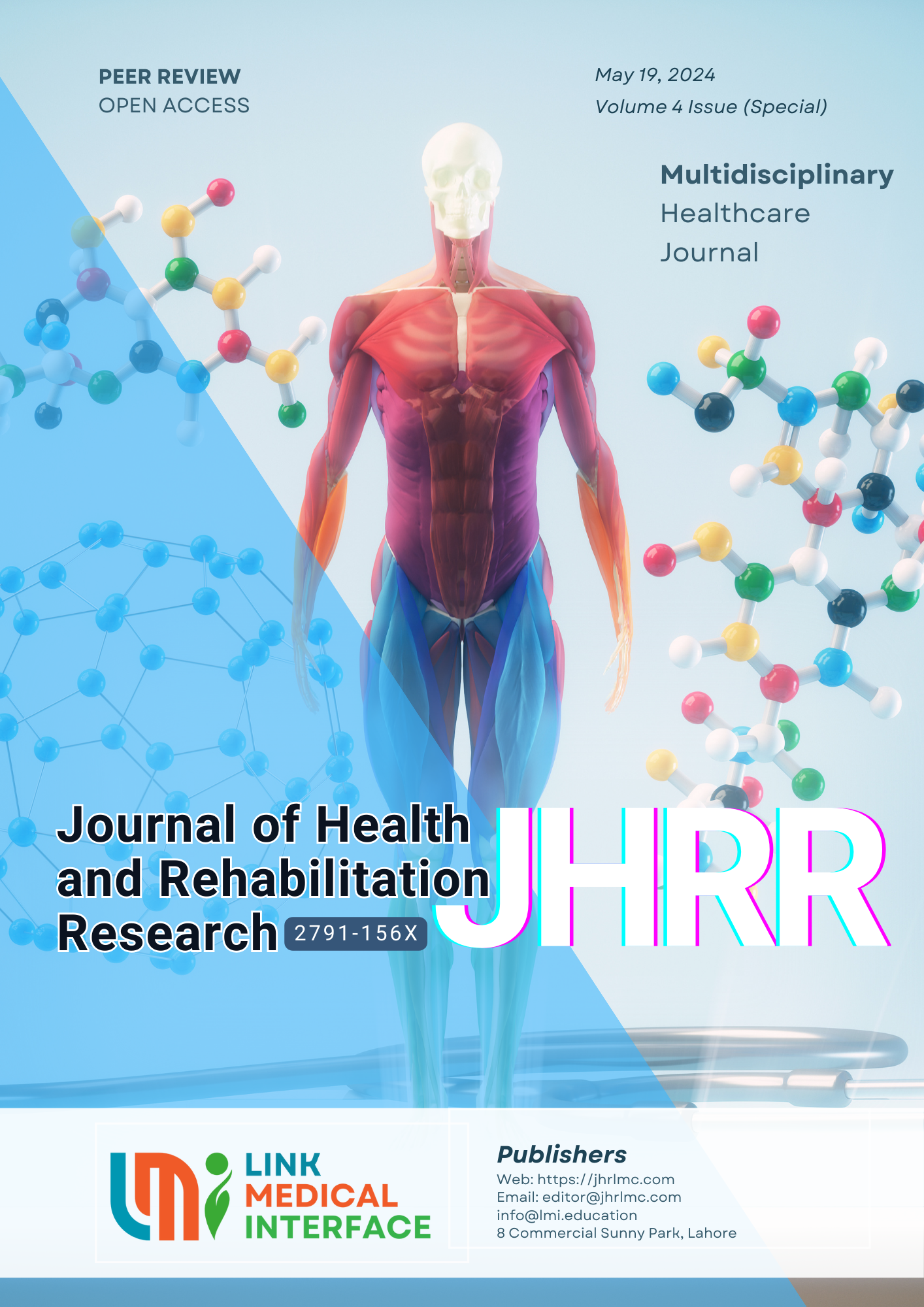Impact of Classroom Occupancy on Vocal Fatigue Among Teachers
DOI:
https://doi.org/10.61919/jhrr.v4iICIC1.1053Keywords:
Vocal Fatigue,, Classroom Occupancy, Voice Health,Abstract
Background: The impact of classroom occupancy on vocal fatigue among teachers is significant, especially within educational and healthcare settings. As the number of students and associated noise levels increase, the risk of vocal strain escalates, affecting both teachers' health and the quality of instruction they can provide.
Objective: The study aimed to assess the potential impact of classroom occupancy on the extent of vocal fatigue experienced by teachers in government schools.
Methods: This cross-sectional study utilized a non-probability convenient sampling method, involving 377 teachers from government schools over a six-month period. Vocal fatigue was assessed using the Vocal Fatigue Index (VFI). Data were collected through a standardized questionnaire and analyzed using SPSS version 26. Statistical measures included frequency, percentages, and mean with standard deviation for demographic information.
Results: The study analyzed responses from 350 participants, with 49% male and 51% female teachers. Results indicated varying levels of vocal fatigue based on classroom size: For classroom sizes of 15-25 students, mean scores were: Tiredness (20.41±5.28), Physical Discomfort (10.90±2.95), and Improvement (7.35±2.39).For classroom sizes of 26-40 students, mean scores were: Tiredness (22.77±7.33), Physical Discomfort (10.03±3.76), and Improvement (7.87±2.81).For classroom sizes of 41-60 students, mean scores were: Tiredness (22.87±7.06), Physical Discomfort (10.21±3.86), and Improvement (8.35±2.94).
Conclusion: The study concluded that vocal fatigue is most pronounced in teachers instructing larger classrooms of 41 to 60 students, highlighting a clear correlation between increased classroom occupancy and heightened vocal strain.
Keywords: Vocal Fatigue, Classroom Occupancy, Teachers, Voice Health, Vocal Fatigue Index, Teacher Well-being.
Downloads
References
References are available on request from author at any time.
Published
How to Cite
Issue
Section
License
Copyright (c) 2024 superadmin_jhrlmc superadmin_jhrlmc, Dania Tahir, Madiha Maqsud, Danish Latif, M Faheem Afzal

This work is licensed under a Creative Commons Attribution 4.0 International License.
Public Licensing Terms
This work is licensed under the Creative Commons Attribution 4.0 International License (CC BY 4.0). Under this license:
- You are free to share (copy and redistribute the material in any medium or format) and adapt (remix, transform, and build upon the material) for any purpose, including commercial use.
- Attribution must be given to the original author(s) and source in a manner that is reasonable and does not imply endorsement.
- No additional restrictions may be applied that conflict with the terms of this license.
For more details, visit: https://creativecommons.org/licenses/by/4.0/.






